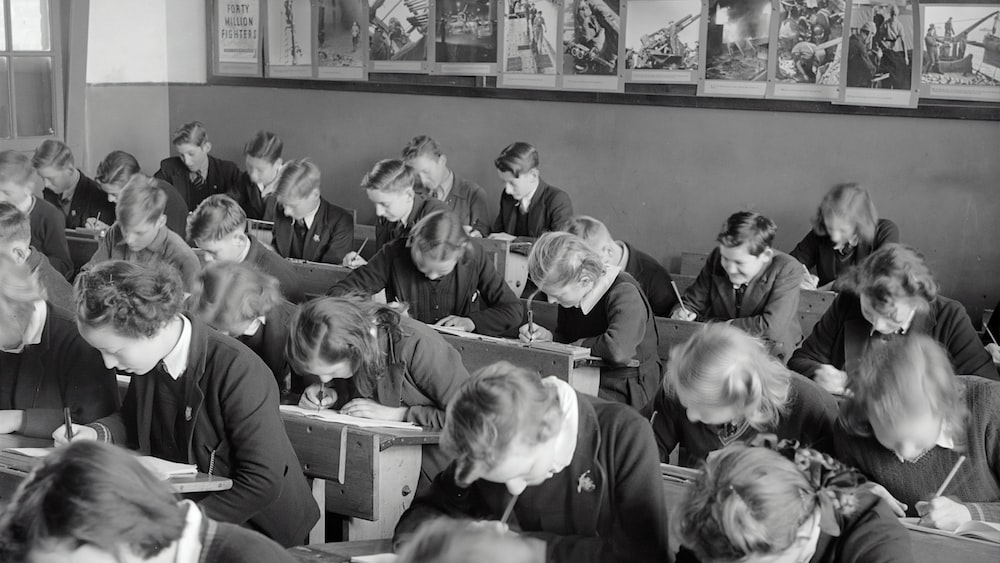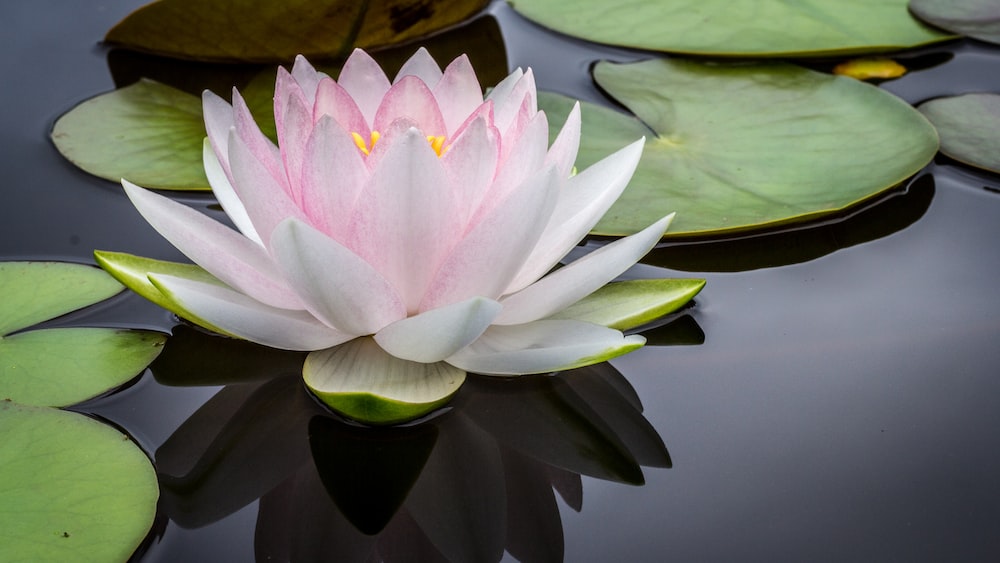15 Fun And Easy Mindfulness Activities For Students
Welcome to the wonderful world of mindfulness! In our fast-paced, technology-driven society, it’s easy to get caught up in the hustle and bustle, leaving us feeling stressed and overwhelmed. But what if I told you that there are fun and easy mindfulness activities that can help students of all ages find peace and balance in their lives? It’s true! Mindfulness has been proven to reduce stress, improve focus, and promote overall well-being. So, whether you’re a teacher, parent, or student, this article is for you!
We’ll explore 15 different mindfulness activities, tailored for younger students, middle school students, and high school students. These activities can be easily incorporated into the classroom or practiced at home, helping students develop healthy habits that will benefit them for years to come. So, let’s dive in and discover these amazing mindfulness techniques that will not only help students stay calm and focused but also make learning a more enjoyable experience!
Mindfulness Activities for Younger Students
Younger students have unique needs when it comes to mindfulness. Their developing minds require activities that are age-appropriate, engaging, and easy to understand. Below are five mindfulness activities designed specifically for younger students that can be practiced in the classroom or at home.
1. Deep breathing exercises
Deep breathing exercises are a fantastic way to introduce mindfulness to younger students. They’re simple, effective, and can be done anywhere! Start by having the students sit or stand comfortably, with their hands resting on their laps or by their sides.
Instruct them to take slow, deep breaths in through their noses and out through their mouths. Encourage them to pay attention to the sensation of the breath entering and leaving their bodies. This practice helps calm the mind, reduce stress, and improve focus, making it an ideal activity for young learners.
Introducing deep breathing exercises can help younger students practice mindfulness, reduce stress, and improve focus.
2. Mindful listening walks
Mindful listening walks are a great way to get students outside and engaged in mindfulness. These walks can be done around the schoolyard or a nearby park. The goal is to encourage students to pay close attention to the sounds they hear as they walk.
Ask them to focus on the different sounds and how they change as they move through the space. This activity not only encourages mindfulness but also helps develop listening skills and a greater appreciation for the world around them.

3. Finger tracing
Finger tracing is a simple, tactile activity that can help younger students practice mindfulness and focus. Have the students trace a shape or pattern on their desk, their hand, or even on a piece of paper in front of them.
As they trace, encourage them to focus on the sensation of their finger moving and the shape they are creating. This activity can be particularly helpful for students who struggle with attention or have difficulty sitting still.
4. Guided imagery
Guided imagery is a powerful mindfulness tool that can help younger students tap into their imaginations and find a sense of calm. Begin by having the students sit comfortably and close their eyes.
Then, guide them through a relaxing and engaging story or scene, encouraging them to visualize the images in their minds. This practice can help students develop their visualization skills, reduce stress, and improve focus.
5. Five senses exploration
A five senses exploration is a fun and engaging way to introduce mindfulness to younger students. Have the students sit or stand comfortably, and then guide them through a sensory exploration of their surroundings.
- Ask them to identify what they can see, hear, smell, taste, and touch.
- Encourage them to pay close attention to each sensation, noting any changes or interesting details.
This activity helps students develop their observation skills and become more aware of the world around them.
Mindfulness Activities for Middle School Students
As students enter middle school, their mindfulness needs evolve. These activities are designed to help middle schoolers develop their mindfulness skills and cope with the unique challenges they face during this transitional time.
6. Body scan meditation
Body scan meditation is an excellent mindfulness activity for middle school students, as it helps them become more aware of their physical sensations and emotions. Have the students sit or lie down comfortably, with their eyes closed or focused on a specific point.
Guide them through a slow, focused scan of their entire body, starting at their toes and moving up to the top of their heads. Encourage them to pay attention to any sensations or tension they feel, and to breathe into those areas to release the tension. This practice can help students develop body awareness, reduce stress, and improve focus.
7. Gratitude journaling
Gratitude journaling is a fantastic way for middle school students to develop a positive mindset and become more self-aware. By regularly writing down things they are grateful for, students learn to focus on the good aspects of their lives and develop a deeper sense of appreciation.

It’s simple to incorporate gratitude journaling into a daily routine. Students can start by listing three things they’re thankful for each day. Encourage them to be specific and think about why they’re grateful for each item on their list. Over time, this practice can help students build resilience, improve their self-esteem, and enhance their overall well-being.
8. Mindful eating
Mindful eating involves paying full attention to the experience of eating and drinking. It’s an excellent way for middle school students to learn about mindfulness while also developing a healthier relationship with food. By focusing on the taste, texture, and aroma of food, students can appreciate their meals more and listen to their body’s hunger and fullness cues.
To practice mindful eating, have students slow down their eating process and really savor each bite. Encourage them to chew thoroughly, put their utensils down between bites, and avoid distractions like screens or conversations during meals. This practice can help students develop self-awareness and cultivate a healthier attitude towards food.
9. Loving-kindness meditation
Loving-kindness meditation, or metta meditation, is a mindfulness practice that encourages students to cultivate compassion and empathy for themselves and others. It involves silently repeating phrases of goodwill and positive intentions, such as “May I be happy, may I be healthy, may I be safe.”
Begin by guiding students through a short meditation focused on themselves. Then, gradually expand the circle of kindness to include friends, family, and eventually, all beings. This practice can help students develop empathy, reduce feelings of isolation, and foster a sense of connectedness with the world around them.
Cultivating compassion and empathy through loving-kindness meditation can reduce isolation and foster a sense of connectedness with the world around us.
10. Yoga and stretching
Yoga and stretching are excellent ways for middle school students to practice mindfulness while also improving their physical health. By focusing on the sensations in their bodies and coordinating their movements with their breath, students can develop a deeper sense of self-awareness and relaxation.
Introduce students to simple yoga poses and stretches that they can practice during breaks or after school. Encourage them to pay attention to their breath and the sensations in their bodies as they move through each pose. This practice can help students release tension, improve their flexibility, and enhance their overall well-being.
Mindfulness Activities for High School Students
As students enter high school, they face new challenges and responsibilities. Mindfulness activities can help them navigate this phase with greater ease and self-awareness, empowering them to make better decisions and handle stress more effectively.

11. Mindful goal setting
Mindful goal setting is a powerful tool for high school students, helping them to develop clarity, focus, and a sense of purpose. By setting specific, achievable, and meaningful goals, students can stay motivated and take charge of their own success.
Begin by guiding students through the process of identifying their values and aspirations. Then, help them break down their larger goals into smaller, manageable steps. Encourage students to regularly review and adjust their goals as needed, maintaining a mindful and intentional approach to their personal growth.
12. Visualization techniques
Visualization is a powerful mental tool that can help high school students enhance their focus, motivation, and self-confidence. By mentally rehearsing desired outcomes and imagining themselves achieving their goals, students can build the mental resilience needed to overcome obstacles and setbacks.
Introduce students to a variety of visualization exercises, such as mentally rehearsing a successful presentation or visualizing themselves acing an exam. Encourage students to practice these techniques regularly, especially when facing challenges or preparing for important events. Research has shown that visualization can improve performance, boost motivation, and even increase physical strength and endurance.
13. Progressive muscle relaxation
High school students often experience stress and tension, which can manifest as physical discomfort or pain. Progressive muscle relaxation (PMR) is a mindfulness technique that helps students release this tension and cultivate a sense of calm and relaxation.
Begin by guiding students through a PMR exercise, focusing on tensing and relaxing different muscle groups in a systematic order. Encourage them to pay close attention to the sensations in their bodies as they tense and release each muscle group. With regular practice, students can learn to manage stress more effectively, improve their sleep quality, and enhance their overall well-being.
14. Mindfulness apps and technology
Mindfulness apps and technology have brought the ancient practice of meditation and mindfulness into the 21st century. With smartphones and tablets at our fingertips, mindfulness practices are just a few taps away. Some popular mindfulness apps include Headspace, Calm, and Insight Timer, which offer guided meditations, sleep stories, and other mindfulness exercises for all ages and experience levels. These apps make it easy for students to practice mindfulness anytime, anywhere. Teachers can also use these apps in the classroom to guide students through mindfulness exercises and create a more focused and calm learning environment.
15. Group mindfulness discussions
Group mindfulness discussions provide an excellent opportunity for students to share their experiences, insights, and challenges related to mindfulness practice. These discussions can help create a sense of community and support among students, fostering empathy, patience, and understanding. Teachers can facilitate group discussions by asking open-ended questions that encourage reflection and self-awareness, such as “How did you feel during the meditation?” or “What thoughts or emotions arose during the practice?” By engaging in group mindfulness discussions, students can learn from one another, deepen their understanding of mindfulness, and strengthen their commitment to their practice.
FAQs
1. How do mindfulness activities benefit students?
Mindfulness activities benefit students by improving focus, reducing stress, and enhancing emotional regulation. These practices help students develop self-awareness, resilience, and empathy, which can lead to better academic performance, improved relationships, and overall well-being.

2. How can teachers incorporate mindfulness activities into their daily routine?
Teachers can incorporate mindfulness activities into their daily routine by starting the day with a short meditation, introducing mindful moments throughout the day, or integrating mindfulness exercises into the curriculum. By setting aside a few minutes each day for mindfulness practices, teachers can create a calmer and more focused classroom environment that supports learning and emotional well-being.
3. How can parents support mindfulness practices at home?
Parents can support mindfulness practices at home by creating a quiet space for meditation, practicing mindfulness together as a family, and encouraging open discussions about mindfulness experiences. By modeling mindfulness and providing opportunities for practice, parents can help their children develop lifelong habits that promote emotional and mental well-being.
4. What are some resources for learning more about mindfulness in education?
Some resources for learning more about mindfulness in education include books, online courses, and professional development workshops. Organizations such as Mindful Schools and the Greater Good Science Center offer resources and training programs to help educators incorporate mindfulness into their teaching practices.
Conclusion
Incorporating mindfulness activities into the daily lives of students can have a profound impact on their well-being, academic success, and personal growth. By introducing mindfulness practices at an early age, we can help shape the minds of future generations and create a more compassionate and empathetic society.
No matter the age or experience level, there are mindfulness activities available to suit every student’s needs. From deep breathing exercises for young children to group discussions for high school students, mindfulness can be woven into the fabric of education and daily life.
As educators and parents, it’s essential to support and encourage mindfulness practices both in and out of the classroom. By doing so, we can help our students develop the skills and habits needed to navigate the challenges of life with resilience, empathy, and self-awareness.
So, what are you waiting for? Start exploring the world of mindfulness with your students and watch as they grow and thrive, both academically and personally.
I wish you the best! Fabian.
Share with your Friends:






